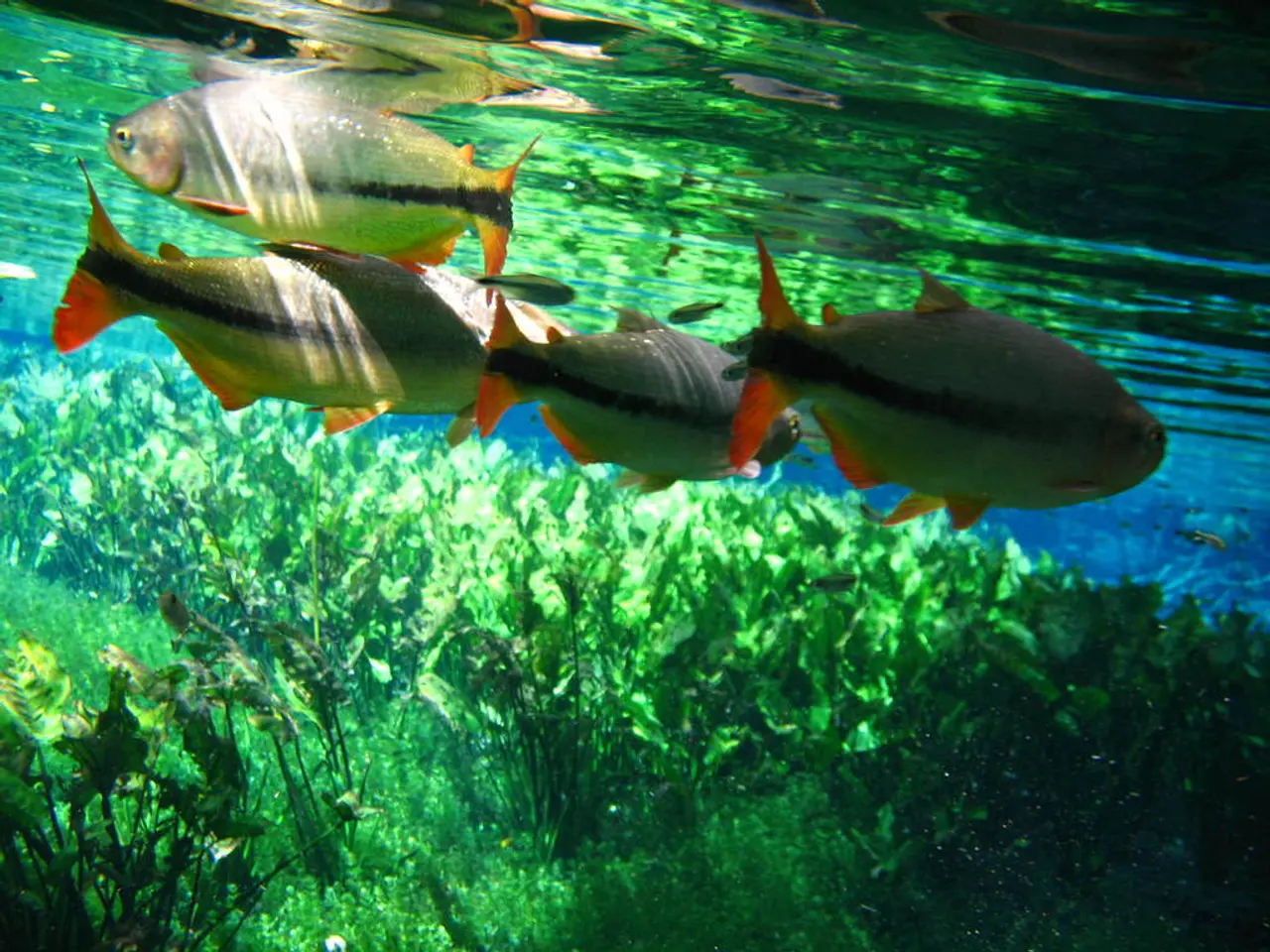Fall-run Salmon Face Existential Crisis as First Sightings Unknown
Fall-run salmon, a vital indicator species and cultural icon for Native American Tribes, face severe population declines due to habitat loss and warming waters. Despite their significance, the exact timing of the first fall-run salmon sightings in California rivers this year remains unknown.
Fall-run salmon, also known as Chinook salmon, typically begin their migration from the ocean in September and October. They journey through San Francisco Bay, the Sacramento-San Joaquin Delta, and Central Valley rivers, eventually reaching the Sierra Nevada and interior Coastal Ranges to spawn. This journey is crucial for the ecosystem, as the salmon contribute marine-origin nitrogen to wine grapes in the rivers they traverse.
These salmon play a significant role in maintaining clean and safe water supplies for Californians. However, they struggle to survive and spawn in water temperatures above 53.5 degrees Fahrenheit. Historical spawning habitat loss and ecosystem degradation have exacerbated the decline in their populations, posing a threat to the $1.4 billion commercial fishing industry that relies on them.
Remarkably, female fall-run salmon travel hundreds of miles without eating, appearing as 'living dead' by the time they reach their spawning grounds. After spawning, the females die, but their carcasses provide essential nutrients to the river ecosystems. Dam removals, such as the Klamath dams, have demonstrated that salmon populations can recover with improved conditions.
The lack of information about the first fall-run salmon sightings in 2022 underscores the need for continued monitoring and conservation efforts. Their survival is crucial for the ecosystem, cultural significance, and the commercial fishing industry. As water temperatures rise and habitats continue to degrade, urgent action is required to protect these iconic fish and the rivers they call home.
Read also:
- Federal health clinics in Maine seek restoration of withheld Medicaid financing, filing a lawsuit against the Trump administration over funding reductions.
- Depakote Cost in 2025: Discounts and Additional Savings Options
- Understanding the Two Variants of Macular Degeneration
- Guidelines for Developing a Fresh New Employee Onboarding Presentation







